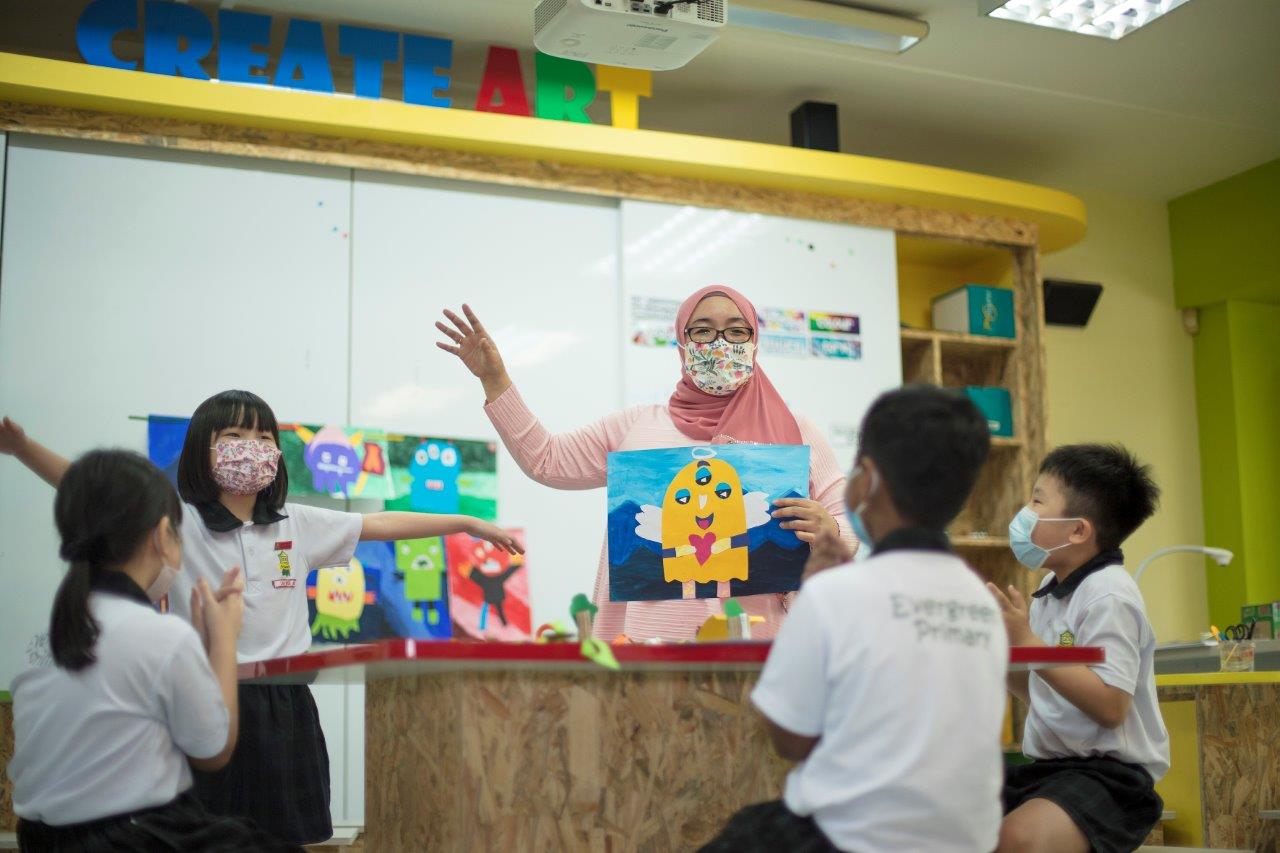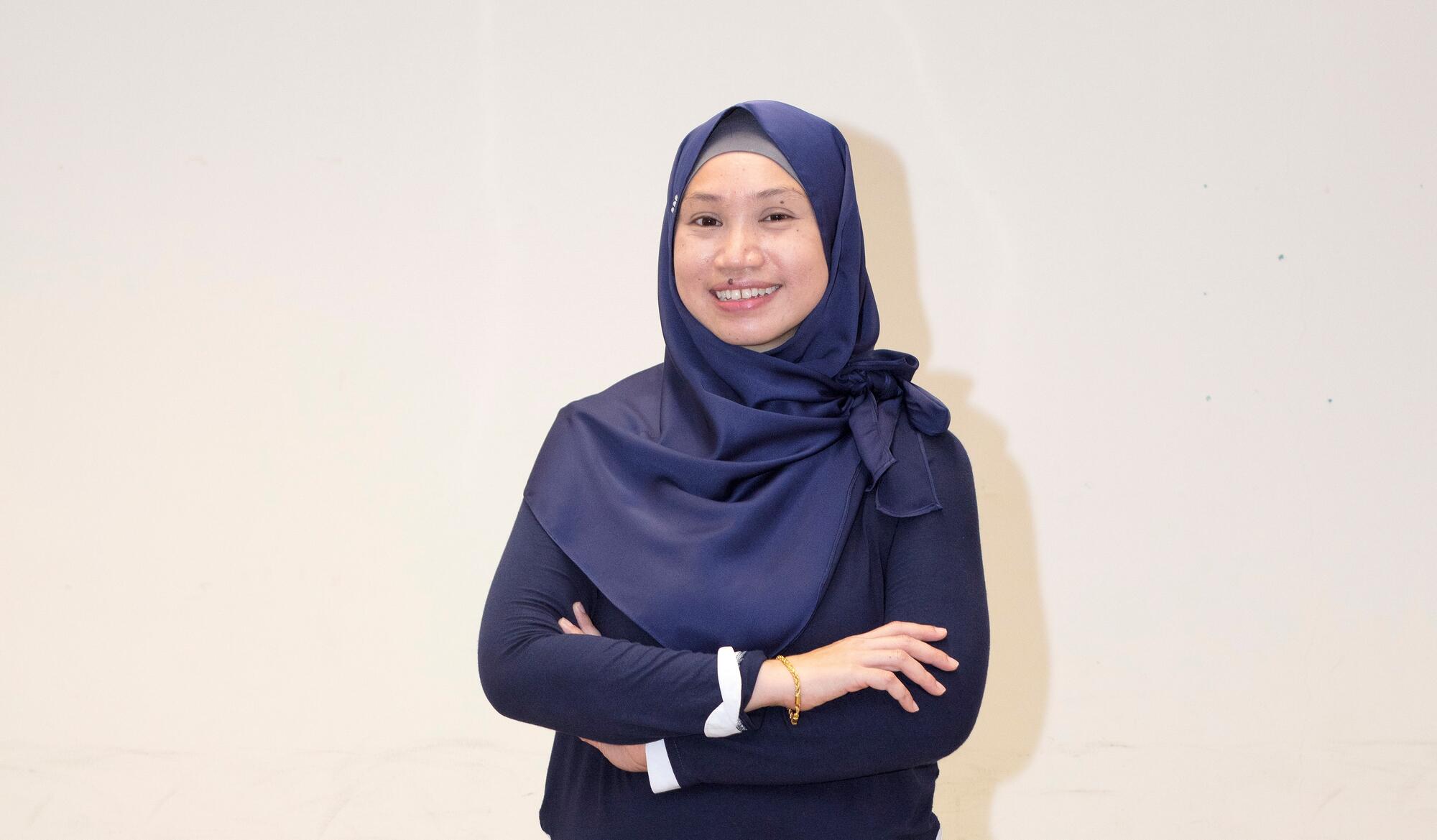Artist at Play
30 Nov 2015
.jpg)
A firm believer in the idea that art is for everyone, Siglap Secondary School Principal Low Joo Hong takes a practical approach when it comes to getting students interested in an art education.
Mr Low Joo Hong, Principal of Siglap Secondary School, is better known to readers of made-in-Singapore children’s books as Ye Zi (Chinese for “coconut”). He has done illustrations for seven Chinese-language books for kids and one book in English. In the pages of these works, he conjures up magical worlds with his whimsical illustrations — a baby dragon emerges from a purple egg, wild boars bask happily in the sun and a crocodile train soars across the sky.
Fans of his work might be surprised to learn that Mr Low graduated with a degree in Fine Arts, having studied – in his words – “the kind of art that you hang in art galleries.” He taught art for 12 years before taking a break to pursue a Master’s degree in children’s-book illustration in the United Kingdom. His study stint opened his eyes to another world, one where art is driven by popular culture and found in everyday objects such as books and billboards.
And this new perspective now influences how he shapes the art instruction at Siglap Secondary School.
The art of the everyday
“Applied art is a neglected part of our academic system, at least at the secondary level,” Mr Low says. He also recognises that more of his students are likely to take the polytechnic path and may want to pursue an interest in visual communications or animation. By getting students to do more illustrations, he says “it better prepares our kids for a possible career through the polytechnics and applied arts … it’s an edge we’d like our students to have.”
The school organises the Young Illustrator Awards (YIA) – open to students islandwide – every year. This year’s competition attracted close to 1,000 submissions within a month of the official opening. This, says Mr Low, is a solid response as most art competitions in Singapore would attract an average of 200 entries. In addition, the school launched the inaugural Young Creative Photographer Awards this year – “almost like a localised version of Instagram” – in a bid to encourage students to get creative in a different way.
Beyond aesthetics
But there’s much more to art than what ends up on the page or the canvas or, for that matter, the computer screen, according to Mr Low. “The essence of art education is not so much about learning to use watercolours or to draw an onion very well,” he says. Beyond mastering techniques, students at Siglap Secondary School learn values and thinking skills under the school’s arts curriculum.
Mr Low remembers a Secondary 3 boy from the Normal (Technical) stream who made a habit of drawing outside of class. He would consult Mr Low on his artwork and later come back with new and improved versions. This lasted for an entire year. Impressed at the boy’s commitment to his hobby, Mr Low encouraged him to take Art as a Normal (Academic) subject — at a higher level than his subject stream — when he was in Secondary 4. The boy worked hard and eventually scored an A1 in the subject in the N-Level examination.
It would be unrealistic for Mr Low to expect the same level of commitment from every student, but in designing his art lessons he makes it a mission to promote critical thinking. In one particular class, he observed how a teacher showed his students two landscape paintings that looked similar at first glance: one a work of Impressionism that’s worth millions, the other the cheap product of an art market in Vietnam. The teacher asked the students to guess the price of each painting and try to account for the huge difference in their worth. This got the students talking about the visual qualities of the paintings and sparked a discussion of both art history and branding.
Never stop improving
Of Mr Low’s own 20-year history as a teacher, he says, “At this stage, I’m still a disciple.” As an art practitioner, Mr Low constantly challenges himself to get even better. He recently began reading Roald Dahl’s books in hopes of better understanding why the author’s stories hold such great appeal to children. Mr Low also frequents bookstores and websites to see how other artists approach their art.
In his efforts to improve his own illustrations, he draws inspiration from their work.
Mr Low used to think that picture books were childish and simplistic but he changed his mind after hearing professional illustrators discuss their work. He began to appreciate their expertise and the effort they put into creating their illustrations. He sometimes mulls over the possibility that one of his works might be the first book that a two- or four-year-old child picks up. “Imagine the kind of impact a child’s first book can have,” he says. “That’s what makes it so important for local artists and authors to produce quality stuff for children in Singapore.” Spoken like a true artist-educator.
This story is reproduced by permission of the publisher, the Singapore Teachers’ Academy for the aRts.




